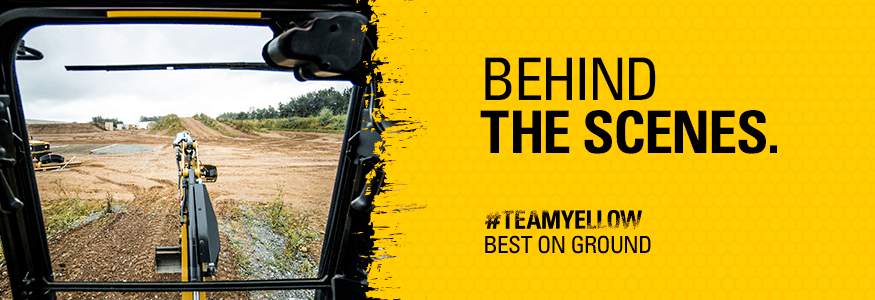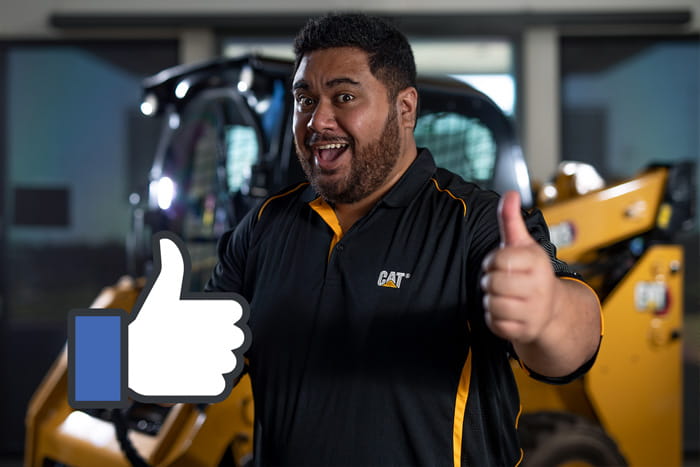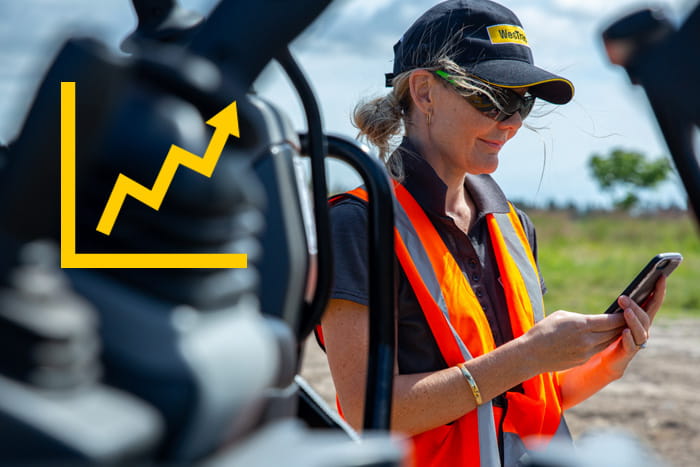Using video to share your skills
There are many ways to encourage potential customers to use your services - one of the best is to use video to share your skills.

There are many ways to encourage potential customers to use your services - one of the best is to use video to share your skills.

If you’re in earthmoving, you’ve got one of the coolest jobs in the world – unlike office workers cooped up in cubicles, you’re outside in the dirt working with machinery putting your skills to the test. It’s exciting content that people love to see on social media, especially potential customers and other people in the industry who might turn to you when they need a skillful earthmover.
In our previous two-part series Boost your social media game, we provided tips to increase your followers, build engagement and benefit your business. Tip four dived into the types of content you should be focusing on and many of our suggestions revolved around flexing your skills as an earthmover. In this article, we’ll be providing you with two exciting ways to share your skills on social media.
First-person action is filming content from inside your cab, so the viewer sees what you see when you’re working. It puts the viewer right in the cab with you, providing them with a first-hand experience of what it’s like to be out there in the dirt.
Dirt Surgeon (Lyndon) is an operator who specialises in creating this type of content – using it strategically to boost his followers and make a name for himself in the industry.
Here are some great examples from the legend:
The easiest way to film first-person action is to either use a new-ish smart phone with a sturdy mount or invest in a Go-Pro style action camera. Mount your device inside your cab so it faces out and experiment with positioning. Your mount should be positioned safely, so as not to distract you or interfere with your ability to use the controls – safety comes before finding the best angle for your video.
When choosing a mount, we recommend picking one that is high quality and very sturdy so as to avoid it coming loose while operating.
Once your device is mounted, it’s important you run some tests because a loose camera will result in shaky unwatchable footage. Before you film, be sure you’ve got enough storage space on the device as you could be filming for a while. When you’re ready to go, press record and get stuck into your work. When you’re finished, hit stop.
Remember, don’t touch your phone or camera while you’re working – it's important to be focused on the job at hand to minimise potential risk.
Third-person action is filming content from outside your cab, so the viewer sees you inside your machine doing the work. Depending on where your camera (or drone) is positioned, it can give the viewer a birds-eye view or a front row seat. Filming the action like this allows the viewer to see how you maneuver your machine around, which is great if you want to demonstrate your technical expertise, i.e. filming a tight access pool building job.
Andrew Parsons is earthmoving contractor who has been operating all types of machines since 1997 and has amassed over 1,000 followers on Instagram by posting great content. Andrew typically films content with his phone and chucks it up on Instagram with very little editing (it can be that easy).
Here are some great examples:
The easiest way to film this type of content is to use a phone that is held by someone else. If you do have someone else who can assist with this, be sure they are standing a safe distance away and wearing appropriate personal protective equipment (PPE). When considering what is a safe distance, please refer to the Code of Practice for Excavation Work available on the Safe Work Australia website.
Our recommendation is to follow this ARTC Toolbox Talk and ensure nobody comes within a minimum of 5 metres to your machine while it is in operation. It is important not to instruct anybody to come closer to your machine for a close-up shot. Instead they should use the device's zoom function.
If you’re riding solo, take a tripod mount with you and set up your device a safe distance away from where you’ll be working. You’ll still need to experiment with positioning and do some testing first, but you’ll be less worried about shaking (depending on how close the camera is to your machine). If your work is going to take a long time, we recommend shooting in time lapse mode as chances are your device won’t have enough storage space to record for hours.
Video editing is by far the most time-consuming and frustrating task when it comes to producing content on social media – but it doesn’t have to be. Nobody expects your videos to be shot and edited like you’re James Cameron, especially if you’re new to it. All new smart phones come with a basic built-in video editor, allowing you to crop and make quick changes.
Popular video editing apps include InShot and CapCut - these are the two that we recommend.
If you want something more advanced, there are free video editing apps (like the two mentioned above) that are very easy to master after a few hours of practice. If you persist, editing videos can be a fun and enjoyable experience. When in doubt, ask others for help, search for tutorials online or invest in a professional freelance editor (search Fiverr).
Once you’re happy with your video file, you can upload it into most social media channels, like Instagram or TikTok, and then use the channel’s tools to edit it even further.
When it comes time to share your video, be sure to tag WesTrac so we can see (and possibly share) your work for the world to see.
Instagram has a collaboration feature that allows you collaborate with up to five other accounts. When you use this feature, and invite other accounts to collaborate with you, if they accept your invite, your post will be dual-posted to their account - extending the reach of your post and ensuring thousands more will see it!
WesTrac is happy to collaborate with our customers when they post great content on Instagram. To explain how to do this, we put together this Instagram video.
Collaborating is easy:
Rules when collaborating with WesTrac:
Please note that we won't accept every invite - but provided your post adheres to the rules above, and the photo or video is good, it's very likely we will accept.
If you’d like some more tips on sharing, be sure to go back and read Part 2 of our Boost your social media game series.

Get started on social media and build a community interested in your business. Part one involves getting setup for social, choosing channels and deciding what to post and when.

Continue to grow your social media and build a community interested in your business. Part two involves being consistent, analysing your posts and doing promotion.

Operating your machinery is one thing but promoting your services and growing your customer base is another vital part of your business – read what the experts have to say.